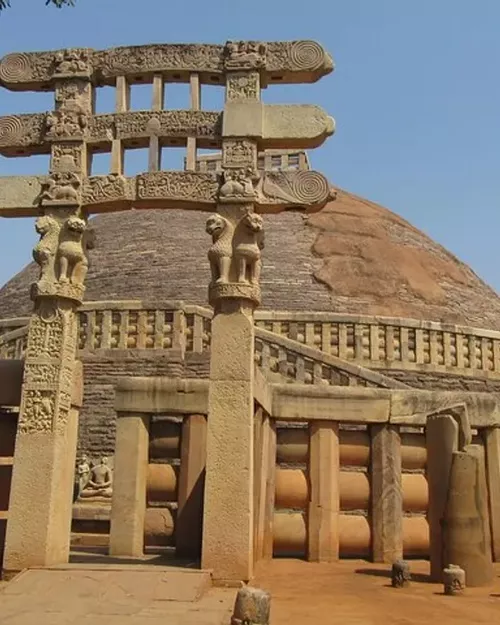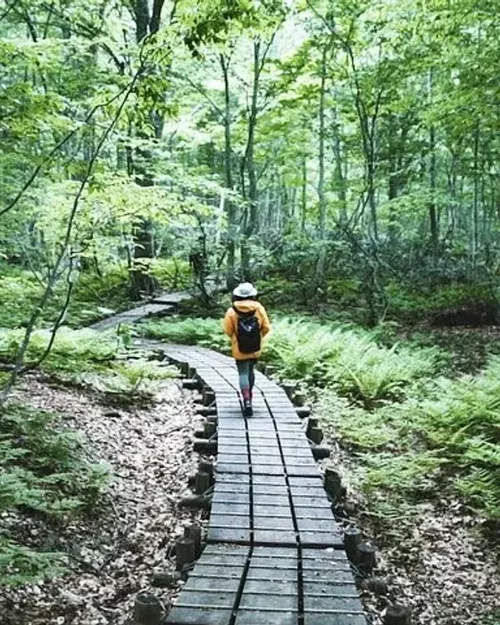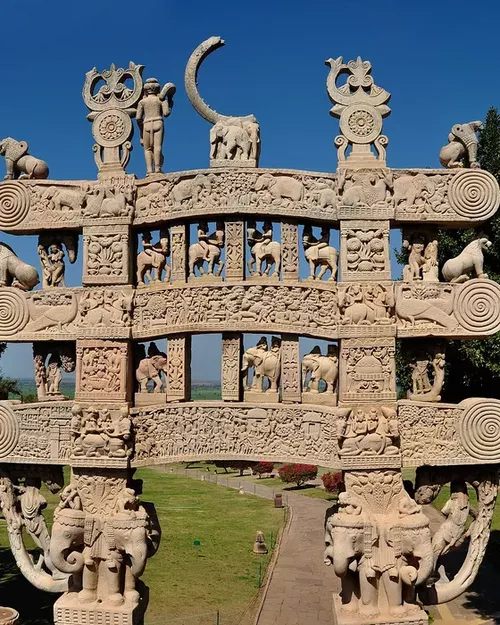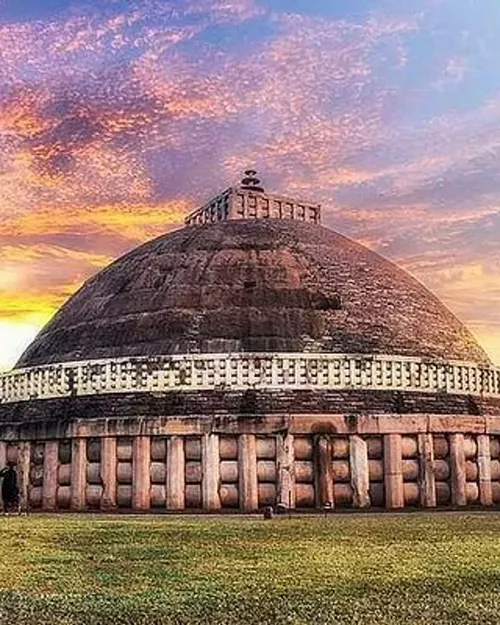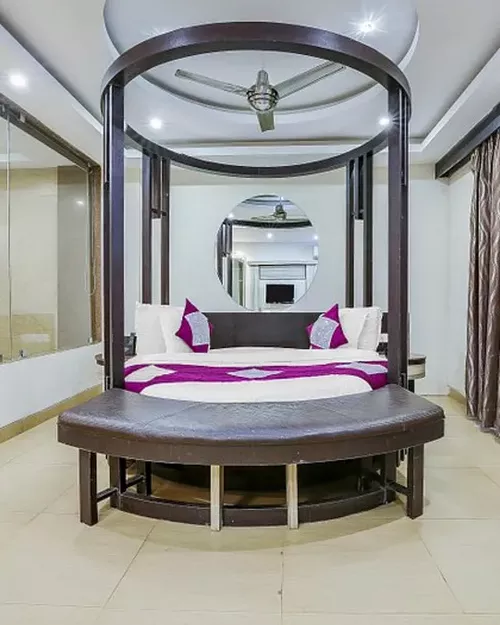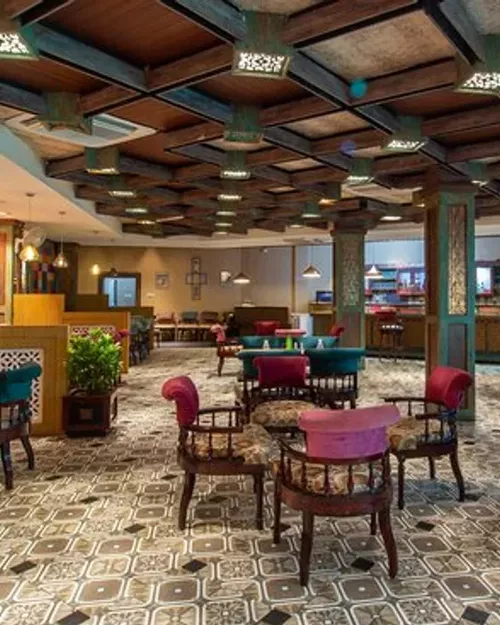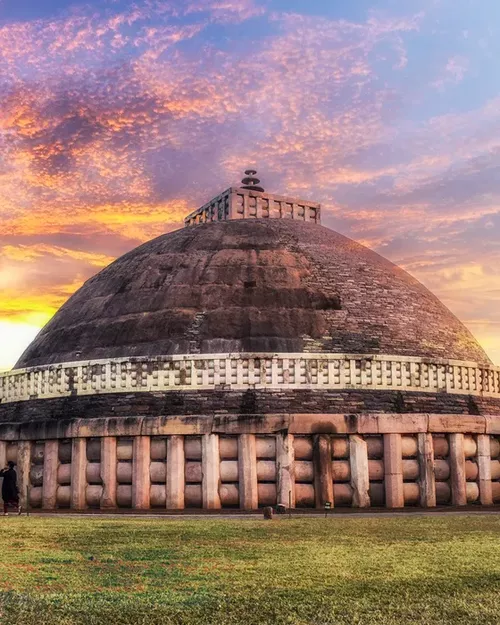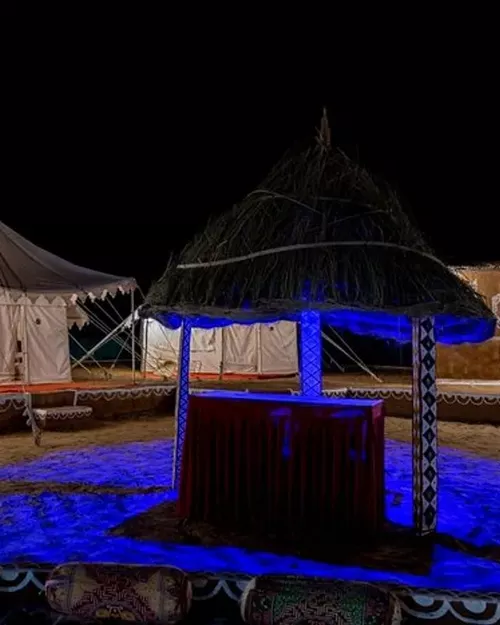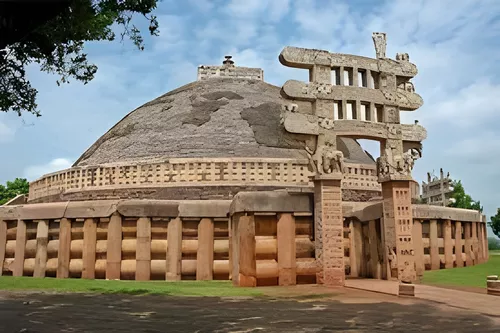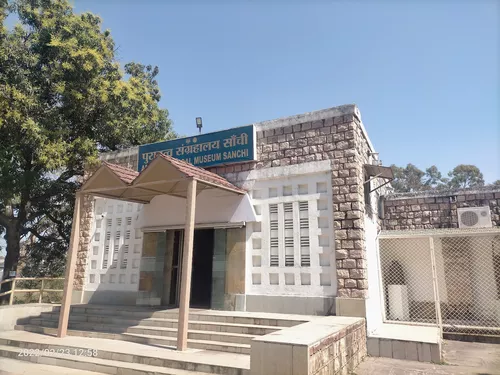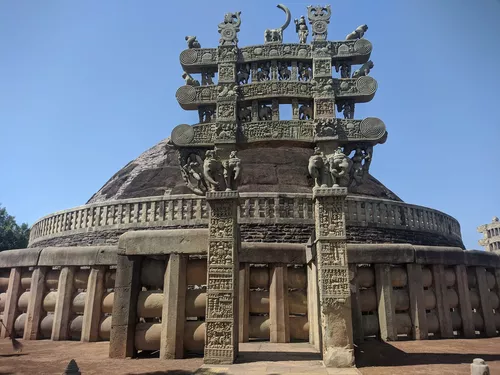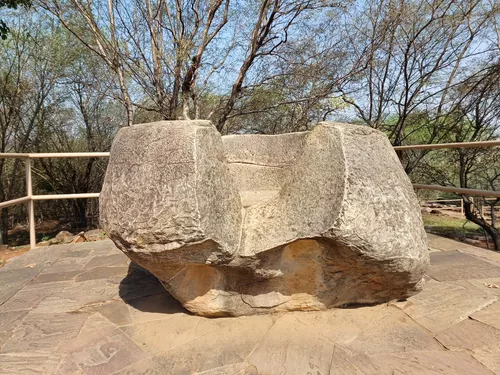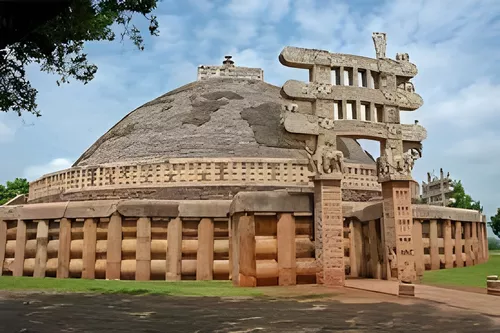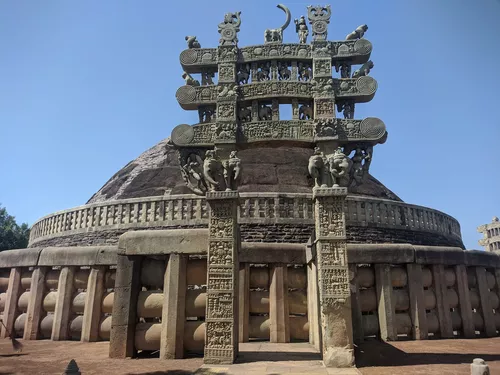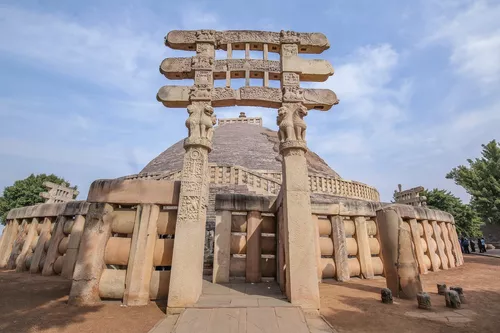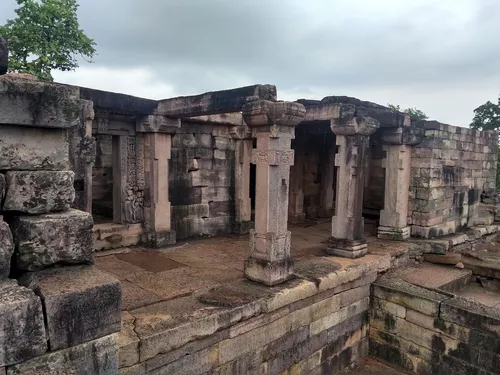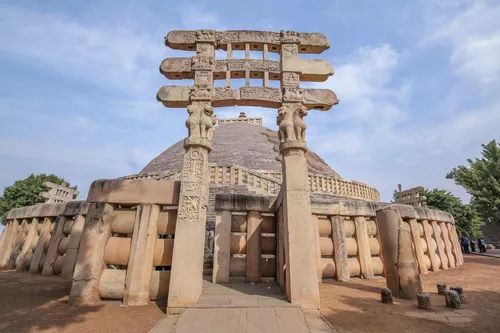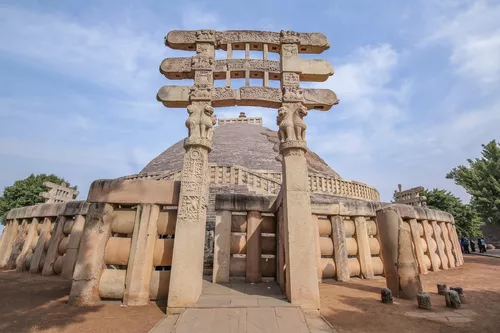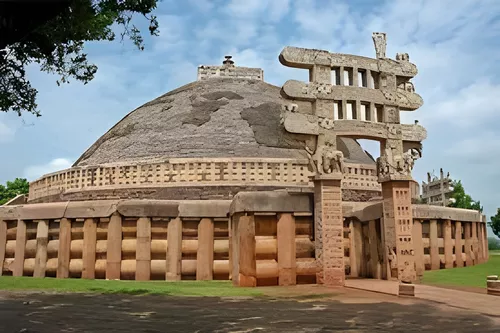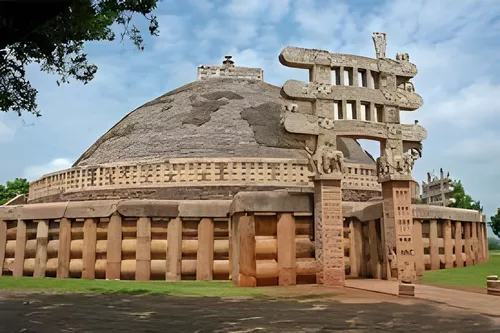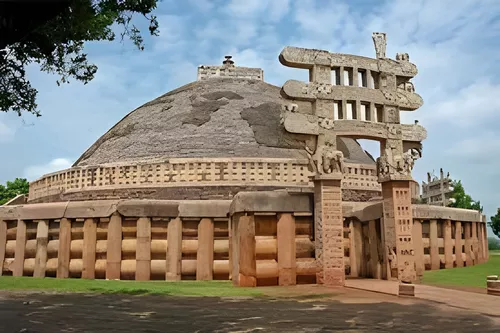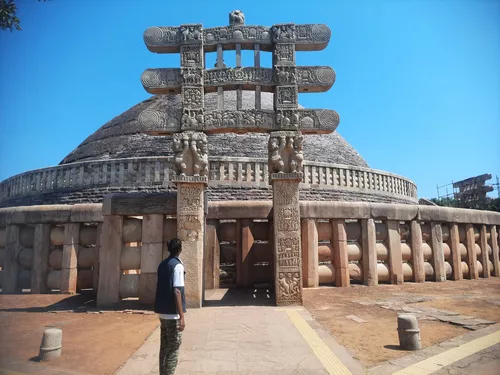Sanchi is popular for
Sanchi in next 3 month
Weather in Sanchi
December in Sanchi is cool and misty with moderate air quality, making it a pleasant time to visit.
Usual trip duration
A short trip to Sanchi can include a visit to the famous Sanchi Stupa, exploring the ancient Buddhist monuments, and experiencing the peaceful ambiance of the town.
Affordable for budget travelers
Ideas To Plan Your Trip
Places To Visit
Places To Eat
Frequently Asked Questions About Sanchi
The best time to visit Sanchi is during the winter months, from October to March. The weather is pleasant and cool, making it ideal for exploring the historical sites. The temperature during this period ranges from 10°C to 25°C, offering comfortable conditions for sightseeing. Avoid visiting during the summer months (April to June) as the heat can be intense and uncomfortable. The monsoon season (July to September) brings heavy rainfall, which may hinder outdoor activities. However, the landscape becomes lush and green during the monsoon, providing a different perspective of the region. Visiting Sanchi during the winter allows for a more relaxed and enjoyable experience, ensuring you can fully appreciate the architectural marvels and historical significance of the stupas and other monuments.
Reaching Sanchi is relatively straightforward, with multiple transportation options available. Here's a detailed breakdown:
| Mode of Transport | Details |
|---|---|
| By Air | The nearest airport is Raja Bhoj International Airport in Bhopal, which is approximately 46 kilometers away from Sanchi. Bhopal is well-connected to major Indian cities like Delhi, Mumbai, and Kolkata. From Bhopal, you can hire a taxi or take a bus to reach Sanchi. |
| By Train | Sanchi has its own railway station, Sanchi Railway Station (SCI), which is connected to major cities like Bhopal, Jhansi, and Bina. Several trains pass through Sanchi, making it a convenient option for travelers. You can check the train schedules and book tickets online through the Indian Railways website or other travel portals. |
| By Road | Sanchi is well-connected by road to nearby cities and towns. You can take a bus from Bhopal, Vidisha, or other neighboring areas. State-run and private buses operate frequently on these routes. Alternatively, you can hire a taxi or drive your own car to Sanchi. The roads are generally well-maintained, ensuring a comfortable journey. |
Sanchi is renowned for its ancient Buddhist monuments, primarily the stupas. Here’s a list of the must-visit attractions:
| Attraction | Description |
|---|---|
| The Great Stupa (Stupa No. 1) | The most famous and largest stupa in Sanchi, originally built by Emperor Ashoka in the 3rd century BCE. It was later expanded and renovated. |
| Stupa No. 2 | Located on a lower terrace, this stupa is known for its elaborate stone carvings depicting scenes from the Jataka tales. |
| Stupa No. 3 | Smaller than the Great Stupa, it contains the relics of Sariputra and Mahamoggallana, two of Buddha's chief disciples. |
| Ashoka Pillar | Remnants of the Ashoka Pillar, with its distinctive Mauryan polish, can be seen near the Great Stupa. |
| Sanchi Archaeological Museum | Houses a collection of sculptures, artifacts, and relics discovered at the Sanchi site, providing valuable insights into the region's history. |
Exploring these sites offers a fascinating glimpse into the rich Buddhist heritage of India.
While Sanchi is primarily known for its historical sites, there are several activities that tourists can enjoy:
- Exploring the Stupas: Spend time wandering around the stupas, taking in the architectural details, and learning about their historical significance.
- Visiting the Museum: The Sanchi Archaeological Museum is a must-visit for history enthusiasts, offering a deeper understanding of the artifacts and sculptures found at the site.
- Photography: Sanchi offers ample opportunities for photography, especially during sunrise and sunset when the monuments are bathed in golden light.
- Meditation and Reflection: The serene atmosphere of Sanchi makes it a perfect place for meditation and reflection. Find a quiet spot and soak in the peaceful surroundings.
- Picnicking: Pack a picnic and enjoy a meal amidst the historical surroundings. There are several spots around the stupas where you can relax and enjoy the scenery.
- Learning about Buddhism: Engage with local guides or read up on the history and philosophy of Buddhism to gain a deeper appreciation of the site's cultural and religious significance.
These activities ensure a well-rounded and enriching experience in Sanchi.
Yes, several destinations near Sanchi offer unique experiences and are worth exploring. Here are a few:
| Destination | Distance from Sanchi (approx.) | Highlights |
|---|---|---|
| Vidisha | 10 km | Ancient city with historical sites like the Heliodorus pillar (Khamba Baba), Udayagiri Caves, and the ruins of Besnagar. |
| Bhopal | 46 km | The capital city of Madhya Pradesh, known for its lakes, mosques, and historical monuments like the Taj-ul-Masajid and the Upper and Lower Lakes. |
| Udayagiri Caves | 13 km | A complex of rock-cut caves dating back to the Gupta period, featuring intricate carvings and sculptures dedicated to Hindu deities. |
| Bhimbetka Caves | 133 km | A UNESCO World Heritage Site known for its prehistoric rock paintings, offering insights into early human life in India. |
These nearby destinations offer a blend of history, culture, and natural beauty, enriching your travel experience in Madhya Pradesh.
Sanchi is a small town primarily known for its historical significance, so the shopping options are limited. However, you can find a few places to buy souvenirs and local handicrafts:
- Local Shops near the Stupas: Small shops near the Sanchi Stupas sell souvenirs such as miniature stupas, Buddhist prayer flags, books on Buddhism, and postcards.
- Vidisha Market: A short drive away, Vidisha offers a more comprehensive shopping experience. You can find local textiles, handicrafts, and traditional Indian clothing.
- Bhopal Markets: For a wider variety of shopping options, consider visiting Bhopal, where you can find everything from traditional handicrafts and textiles to modern clothing and electronics. Popular markets in Bhopal include New Market, M.P. Nagar, and Chowk Bazaar.
While Sanchi itself may not be a shopper's paradise, the nearby towns offer opportunities to pick up unique souvenirs and local products.
Sanchi offers limited dining options, but you can still find a few decent places to eat. Most restaurants offer simple, local cuisine. Here are some options:
- M.P. Tourism Restaurant: Located near the Sanchi Stupas, this restaurant offers a variety of Indian dishes, including vegetarian and non-vegetarian options. It is a convenient choice for tourists visiting the stupas.
- Local Dhabas: You can find small dhabas (roadside eateries) that serve simple and affordable meals. These dhabas usually offer local specialties like dal, roti, and sabzi.
- Restaurants in Vidisha: A short drive to Vidisha will provide more restaurant choices. You can find restaurants serving Indian, Chinese, and Continental cuisine.
- Bhopal Dining: For a wider range of dining options, consider taking a trip to Bhopal. Bhopal offers a diverse culinary scene, with restaurants serving everything from traditional Mughlai cuisine to international dishes.
While in Sanchi, be prepared for basic dining options, focusing on local flavors and simple preparations.
Sanchi holds immense historical significance due to its well-preserved Buddhist monuments dating back to the Mauryan period. Emperor Ashoka, a convert to Buddhism, commissioned the Great Stupa in the 3rd century BCE, marking the beginning of Sanchi's prominence as a Buddhist center. The stupas served as repositories for relics and symbols of the Buddha, attracting pilgrims and monks for centuries. The site flourished under subsequent dynasties like the Shungas and Satavahanas, who added intricate carvings and gateways (toranas) to the stupas. These carvings depict scenes from the Buddha's life, Jataka tales, and everyday life, providing valuable insights into ancient Indian society and art. Sanchi's decline began in the 13th century, leading to its abandonment and eventual rediscovery in the 19th century. Today, Sanchi is a UNESCO World Heritage Site, recognized for its outstanding universal value as one of the oldest and most important Buddhist sanctuaries in India, offering a glimpse into the evolution of Buddhist art and architecture.
Yes, there are accommodation options available in Sanchi, although they are relatively limited compared to larger cities. Here's what you can expect:
- MPT Highway Resort Sanchi: This is a Madhya Pradesh Tourism Development Corporation (MPTDC) property and is one of the most popular choices for accommodation in Sanchi. It offers comfortable rooms and basic amenities, making it a convenient option for tourists.
- Guest Houses: There are a few guest houses in Sanchi that provide budget-friendly accommodation. These guest houses offer simple rooms and basic facilities.
- Hotels in Vidisha: Since Vidisha is only about 10 kilometers away from Sanchi, you can also consider staying in Vidisha, where you will find a wider range of hotels and guest houses.
- Hotels in Bhopal: Bhopal, being the capital city, offers a wide variety of accommodation options, including luxury hotels, budget hotels, and guest houses. If you don't mind staying a bit further away from Sanchi, Bhopal is a good choice.
It's recommended to book your accommodation in advance, especially during peak tourist season, to ensure availability.
When visiting Sanchi, it's important to dress respectfully, keeping in mind the cultural and historical significance of the site. Here are some recommendations:
- Comfortable Clothing: Opt for lightweight, breathable fabrics like cotton or linen, especially if you're visiting during the warmer months. The weather can get hot, and you'll be doing a lot of walking.
- Modest Attire: Dress modestly as a sign of respect for the religious and cultural significance of the site. Avoid wearing revealing clothing such as shorts, tank tops, and dresses with low necklines.
- Covered Shoulders and Knees: It's a good idea to wear clothing that covers your shoulders and knees. You can wear t-shirts or shirts with sleeves and long pants, skirts, or dresses that fall below the knee.
- Comfortable Footwear: You'll be doing a lot of walking, so wear comfortable shoes such as sneakers or walking sandals. Avoid wearing high heels or slippery footwear.
- Hat or Scarf: Protect yourself from the sun by wearing a hat or scarf. This will help prevent sunburn and heatstroke, especially during the summer months.
- Sunglasses: Don't forget to bring sunglasses to protect your eyes from the bright sunlight.
By following these guidelines, you can ensure that you dress appropriately and respectfully while visiting Sanchi.
Yes, there are entry fees to visit the Sanchi Stupas and the Sanchi Archaeological Museum. As of the latest information, the entry fees are as follows:
| Category | Entry Fee (Approximate) |
|---|---|
| Indian Citizens | INR 40 per person |
| Foreign Nationals | INR 600 per person |
| SAARC and BIMSTEC Nationals | INR 40 per person |
These fees are subject to change, so it's always a good idea to check the latest rates at the ticket counter. The entry ticket usually covers access to the Sanchi Stupas and the surrounding area. The Sanchi Archaeological Museum may have a separate entry fee, so it's best to inquire at the museum entrance. There are no specific permits required to visit Sanchi other than the entry tickets. You can purchase the tickets at the ticket counter near the entrance of the Sanchi Stupas. It is advisable to keep the ticket safe as it may be checked at various points within the complex.
The amount of time you should spend at Sanchi depends on your level of interest in history and archaeology. However, a general guideline is:
- Half-Day Trip (3-4 hours): If you are short on time, a half-day trip to Sanchi is sufficient to see the main attractions. This will allow you to visit the Great Stupa (Stupa No. 1), Stupa No. 2, Stupa No. 3, the Ashoka Pillar, and take a quick tour of the Sanchi Archaeological Museum.
- Full-Day Trip (6-8 hours): A full-day trip is ideal if you want to explore the site at a more leisurely pace and delve deeper into the history and significance of the monuments. This will give you ample time to examine the intricate carvings, visit the museum in detail, and soak in the serene atmosphere of the site. You can also take a short trip to nearby Udayagiri Caves if you have extra time.
- Overnight Stay: If you are a history enthusiast or simply want to experience the peaceful ambiance of Sanchi, consider spending a night in Sanchi or nearby Vidisha. This will allow you to explore the site in the early morning or late afternoon, when it is less crowded and the lighting is ideal for photography. You can also take your time exploring the nearby attractions such as Vidisha and Udayagiri Caves.
Ultimately, the amount of time you spend at Sanchi depends on your personal preferences and interests. However, allocating at least 3-4 hours will ensure that you can see the main attractions and appreciate the historical significance of this UNESCO World Heritage Site.




